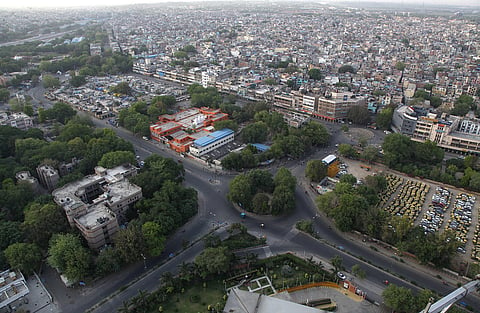

DEHRADUN: Scientists and experts from the Indian Institute of Technology, Roorkee, who are studying nationwide pollution levels, said that pollution is down to almost zero in Delhi and other urban centers of India.
The scientists are analysing data and scanning satellite images to further get more concrete results.
Professor Arun Kumar Saraf from the department of earth sciences who is part of the study said, "The study is to assess about effects of lockdown which includes shutting down of industries and automobiles across India due to which hydrocarbon emission has dropped to drastic levels like never before. This opportunity can be used to study how and what can be done to sustain the environment as well as carry on with activities."
They added that the results of the study will be out soon which will help in determining checks and balances on pollution once the situation is back to normal.
"We are using satellite images as well as collating data from every urban centers with highest pollution levels in the country. Prima facie results show improvement in air quality of Kolkata and Delhi the most," said professor Ajanta Goswami, another scientist from the institution involved in the study.
The scientists also added that areas which have thermal powerplants running on coal still show more pollution in comparison to another area in the country.
States such as West Bengal, Uttar Pradesh, Bihar, Jharkhand and Odisha which are located in the 'Coal Belt' are still emitting more hydrocarbon than other areas of the country.
"The study will point out the ideal circumstances which is next to impossible when routine life resumes once the outbreak is over across the world. But this study can come handy in drafting plans to combat pollution," added professor Saraf.
Earlier, this month, a report from Uttarakhand State Pollution Control Board revealed that pollution levels in Dehradun have declined up to 75% given the lockdown.
In Raipur, PM10 levels have come down to 72.58 µg/m3 (micrograms per cubic metre air) which is between 250-300 µg/m3 in normal functioning days while PM2.5 came down to 33.29 µg/m3 in comparison to 150 µg/m3. The decline in SO2 was also registered in the area with levels reducing to 5.73ppm which is normally between 25-30ppm.
In ISBT, PM10 levels have come down to 67µg/m3 which is between 250-300 µg/m3 in normal functioning days while PM2.5 came down to 23.47 µg/m3 in comparison to 100 µg/m3. The decline in SO2 was also registered in the area with levels reducing to 11.14ppm which is normally between 25-30ppm.
In Clock Tower area, PM10 levels have come down to 76.01µg/m3 which is between 250-300 µg/m3 in normal functioning days while PM2.5 came down to 30.23 µg/m3 in comparison to 100 µg/m3. The decline in SO2 was also registered in the area with levels reducing to 8.05ppm which is normally between 25-30ppm.
According to National Ambient Air Quality Standards (NAAQS) the PM10 levels set for industrial, residential, rural, and other cities in India over a 24-hour period is 100 µg/m3 (micrograms per cubic metre air) and the average over a year is 60 µg/m3.